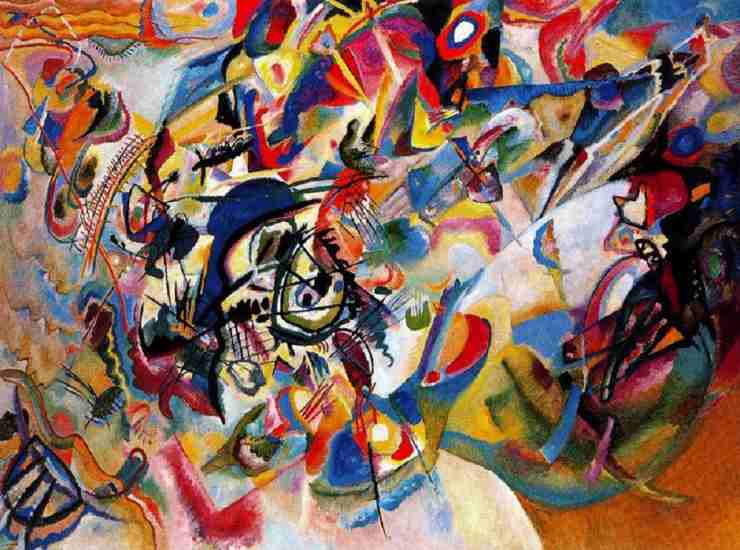“Color is a means of exerting a direct influence on the soul. Color is the key, the eye is the hammer, the soul is the piano with many strings”. Kandinsky is remembered as the main exponent of abstract art and in particular of non-geometric abstract art.
His search for pure formal values has led to results of the greatest importance, above all in the development of line-color relationships. His art is undoubtedly rich in cultural and intellectual motifs, but often reaches the values of free poetry. Among his works are mentioned in particular: The procession of the bride, Der Blaue Reiter, Murnauthe first abstract watercolor, Composition IV , Polychrome circle.
Kandinsky, life of the artist
There cultural training by Vasily Vasil’evič Kandinskij was complex: he dealt with literature, music, ethnography. In 1897 he went to Monk and devoted himself entirely to painting. He traveled in Europe and in the East; he was in close contact with the Lithuanian musician and painter Čiurljonis, who at the time devoted himself to expressing some musical symphonies through color variations. He then came into contact with the Expressionists; he was one of the founders of the Der Blaue Reiter group. In 1910 he executed his first totally unreferenced paintings objective world and mostly intended to visually express musical emotions; at the same time he was writing Über das Geistige in der Kunst and attempted to develop a theory of signs and colors.
In 1913 Kandinsky published one autobiographical writing: Rückblicke. In 1914 he returned to Russia, actively participated in the avant-garde movements, taught (1920) at the Moscow University. He returned to Germany (1921) and, until 1933, taught in the Bauhausof Weimar and Dessau. In 1923 he published the treated Punkt und Linie zu Fläche. In 1934 he settled in Paris continuing to paint abstract compositions, but more measured and not without decorative features.
The abstract and accessible style
There Kandinsky’s poetry find a stable theory in the 1910when the artist publishes his treatise The spiritual in art. In this text the painter demonstrates his intuitions, explaining how according to him the object-work should be approached on several levels: a physical level, or how the eye perceives painted colors and shapes; definitely a level Deeper, in which the shades used communicate with the soul of the viewer through sounds, movements and smells. The essence of painting is therefore all there: a message that does not travel on the rails of rationalitybut that hits us just when we stop wanting to give an explanation.

Although abstract art may not appear immediate at first glance, in reality it is Kandinsky’s style it is based on theories that make its own works accessible to all, provided you get rid of schemes and superstructures that have their roots in a centuries-old tradition. As the artist himself states in his essays, theartwork has the task of stimulating the viewer in a simple and universal way. THE colors they hide sounds, movements, smells and tastes that anyone can perceive. With his paintings Kandinsky therefore communicates by combining shades to create precise messagescodified movements, recognizable scents.
The strong bond with music
Kandinsky notes that there has already been another art for centuries that does not use its means to imitate nature, but to express mental life of the artisti.e. the music: “An artist who does not have the imitation, albeit artistic, of nature as his ultimate aim, but is a creator who wants and must express his inner world sees with envy that these goals have been achieved naturally and easily by the most immaterial art today , the music.” Kandinsky manages to express his own through synesthesia interiority. The colors and abstract shapes make themselves messengers of emotions that only there music it would be able to give, pure emotions, without language, which do not need any rational understanding.

